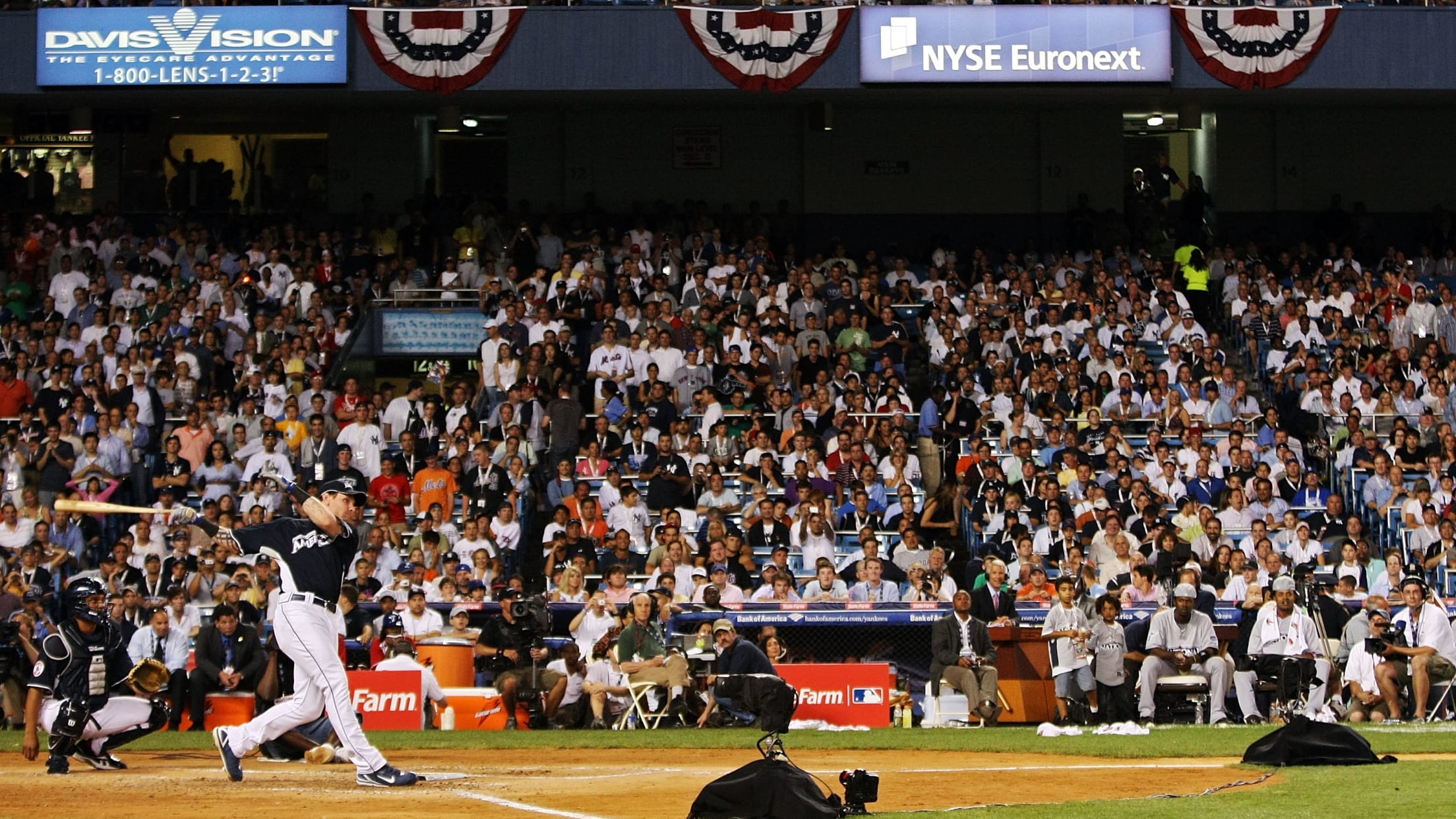The four most outrageous places a ball might end up during the Home Run Derby

Most home runs end up in places you expect, be it the bleachers or the bullpen or the batter's eye. But every ballpark also has that special spot, the landmark that separates the truly gargantuan dingers from the rest: the warehouse in Baltimore, McCovey Cove in San Francisco, the train tracks in Houston -- hit a ball there, and they'll be telling stories about it for years.
With the T-Mobile Home Run Derby set to take place in the nation's capital on Monday night (8 p.m. ET on ESPN), let's find that spot in Nationals Park.
The Curly W
Approximate distance from home plate: 440 feet
When Nationals Park first opened, the curly W was actually a functioning clock. But the gear mechanism kept acting up, so in the winter of 2013 the team decided to remove the hands and turn it into a piece of Nats-themed concept art -- the curly W logo surrounded by a circle of 12 red stars.
Whatever you want to call it, it's an ideal home run target: just to the right of the big scoreboard in right-center, beyond the reach of all but the most prodigious of dingers, yet still close enough that it seems tantalizingly in play.

Approximate distance from home plate: 500 feet
Don't worry, we're not advocating that everybody start launching homers in the direction of the winner of the last two NL Cy Young Awards. Look up at the right-field concourse at Nationals Park and you'll find something peculiar staring back at you: a gigantic headshot of Scherzer, one eye brown and one eye blue, with the letter "K" in each of them.
My favorite addition to Nats Park: Scherzer Eyes above Shake Shack pic.twitter.com/DpikuW6ymo
— Scott Allen (@ScottSAllen) April 3, 2017
That's way, way up there. Nationals Park was built 24 feet into the ground, so the concourse at street level runs above the second deck. Still, it's probably doable: Juan Soto's moonshot against the Yankees back in June fell just short, and Statcast tracked it at 433 feet -- impressive, but nothing we haven't seen in a Derby before.
The Anacostia River
Approximate distance from home plate: as little as 500 feet, depending on the angle
Admittedly, this one is a bit of a long shot. The Anacostia lies directly south of Nationals Park, running nearly parallel to the first-base line -- meaning that one of the lefties in the field would have to yank one foul all the way out of the stadium. But if that were to happen, then all we'd need for a makeshift splash landing is a bounce off the Salt Line bar. We believe in
Half Street
Approximate distance from home plate: 725 feet
Nationals Park is bordered by South Capitol Street to the west, First Street to the east and N Street to the north. But there's another road that runs north-south, directly into the plaza entrance beyond center field: Half Street (which also lends its name to arguably the most passionate group of Nats fans, the Half Street Irregulars).
It's so close that you can even see it from the stadium's second deck:

Who knows, it's technically even possible for a slugger to go full Tin Cup and hit a ball out of the stadium, down the road and onto the steps of the U.S. Capitol.








